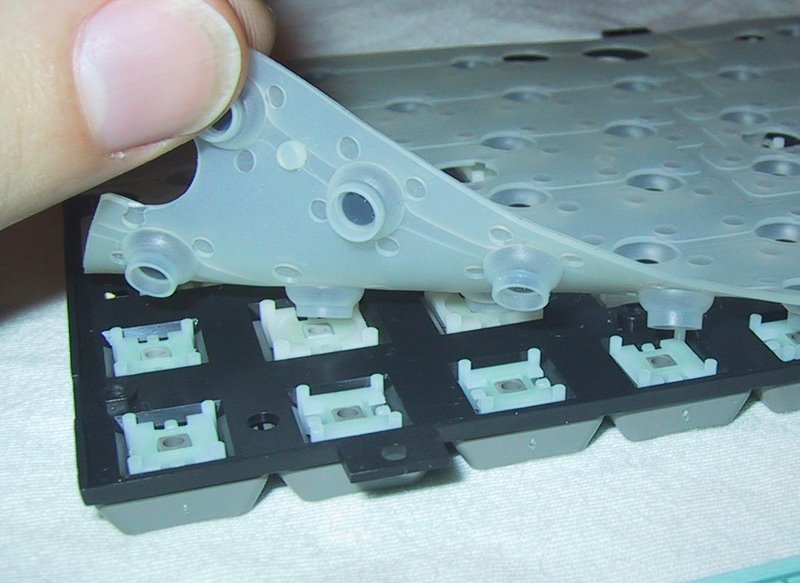Check Out Different Types of Membrane Switch Technologies for Your Demands
Check Out Different Types of Membrane Switch Technologies for Your Demands
Blog Article
Understanding the Capability of Membrane Switches for Interface Tools
The performance of membrane changes stands for a considerable development in individual interface design, integrating effectiveness with aesthetic adaptability. These buttons run with a multi-layered framework that equates user interactions into electrical signals, permitting both compact designs and strength versus environmental variables. As sectors significantly prioritize individual experience, recognizing the nuances of membrane layer button modern technology ends up being essential. What ramifications do these innovations hold for future applications, and how might they redefine user communications throughout different tools?
What Are Membrane Layer Switches?
Membrane switches are ingenious interface tools that help with customer interaction with digital tools. These functional parts contain numerous layers, consisting of a graphic overlay, spacer, and a printed circuit layer. The style permits for a smooth integration into different digital gadgets, boosting both the aesthetic and functional aspects of customer interfaces.
Membrane layer buttons are commonly employed in a variety of applications, from house appliances to commercial equipment and medical devices. Their construction commonly features a thin profile, making them an optimal selection for small layouts. The tactile feedback offered by these switches can be crafted to meet certain individual preferences, guaranteeing effective communication between the user and the tool.
Longevity is an additional substantial advantage of membrane buttons, as they are immune to dirt, dampness, and chemicals, which boosts their life expectancy in requiring environments. In addition, these buttons can be customized in regards to shape, size, and visuals style, permitting branding and user-specific functions. On the whole, membrane layer switches stand for a functional solution for improving individual experience in electronic tools, incorporating capability with visual appeal in a reliable manner.
Exactly How Membrane Switches Over Job
Operating on a straightforward principle, membrane layer switches use a split construction to sign up individual input successfully. Each switch includes numerous layers, including a printed circuit layer, a spacer layer, and a top graphic layer, which are made to collaborate effortlessly. When a customer presses the top layer, it compresses the spacer layer, bringing the conductive elements of the circuit layer right into contact with each various other.
This get in touch with produces a closed circuit, signaling the device to execute a specific feature. The design enables for numerous setups, including tactile feedback, which can enhance the customer experience by providing a physical sensation upon activation. The products utilized in membrane layer switches often include versatile substratums, such as polyester or polycarbonate, which guarantee sturdiness and durability against wear and tear.

Trick Advantages of Membrane Layer Buttons

Another significant advantage is their compactness. Membrane layer buttons are slim and lightweight, which additional reading allows makers to conserve space in their gadgets without compromising functionality. This function is particularly helpful in applications where weight and quantity are important considerations.
In addition, membrane layer switches are immune to dust, moisture, and chemicals, boosting their toughness. This durability extends their lifespan and lowers the requirement for constant substitutes, causing price financial savings with time.
Moreover, the tactile comments offered by membrane layer switches can be maximized to improve customer communication. They can include attributes such as elevated switches or distinct clicks, boosting use and customer experience.
Applications Throughout Industries
Customer interface devices using membrane layer buttons are prevalent in a vast variety of industries, showcasing their adaptability and performance. Membrane Switch. In the clinical industry, membrane switches are essential to tools such as diagnostic devices and individual tracking systems, where their longevity and simplicity of cleansing are crucial for keeping hygiene criteria. In the automobile sector, these switches are utilized in dashboard controls and infomercial systems, giving a smooth and modern user interface for individuals.
Furthermore, the customer electronics field take advantage of membrane buttons in appliances and portable tools, where compact layout and straightforward interfaces enhance individual experience. Industrial applications likewise utilize membrane switches for control panels in machinery and automation systems, highlighting their toughness and resistance to extreme settings.
In the aerospace and defense sectors, membrane layer buttons are utilized in cockpit controls and devices, where integrity and performance under extreme problems are vital. Additionally, the gaming market significantly includes membrane switches in controllers and arcade equipments, contributing to an engaging customer experience. In general, the adaptability of membrane layer changes allows their widespread usage across various fields, underscoring their value in modern-day customer interface style.
Future Patterns in Membrane Layer Switch Over Innovation

Additionally, making use of advanced materials, such as polycarbonate and polyester movies, is expected to increase, giving enhanced sturdiness and resistance to ecological stressors. These products add to the overall long life of membrane switches, making them ideal for harsher industrial applications.
Additionally, the view it now consolidation of clever innovation, consisting of IoT connection, will make it possible for membrane layer switches to interact with other gadgets and systems, assisting in a more interactive customer experience. This fad lines up with the growing demand for wise tools across various markets, from medical care to consumer electronic devices.
Last but not least, customization options are anticipated to increase, enabling manufacturers to develop bespoke solutions customized to details customer needs and choices. These growths will certainly place membrane layer buttons as vital parts in the advancement of interface innovation.
Verdict
To conclude, membrane switches over stand for a critical advancement in interface technology, providing a dependable and flexible service for varied digital applications. Their split building and construction assists in compact design, while functions such as responsive responses enhance customer interaction. The resilience versus environmental variables even more go strengthens their utility throughout numerous markets. As developments in product scientific research and touch sensing technologies proceed, the capability and applicability of membrane layer switches are expected to expand, enhancing their significance in modern-day digital tools.
Report this page